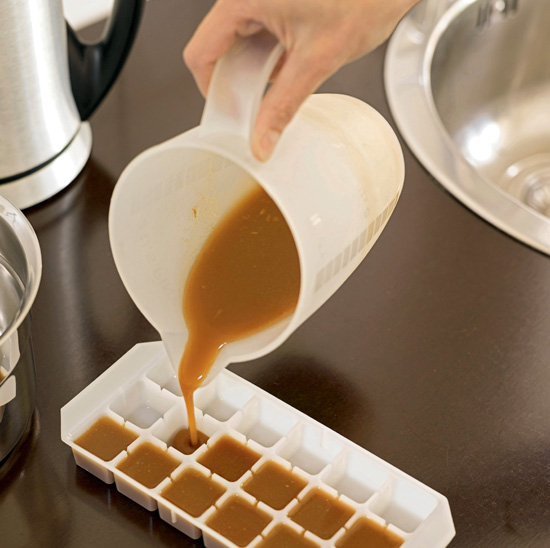
THRIFT IN THE KITCHEN
With a little planning, skill and creativity, you can save plenty of cash in the kitchen—without giving up good food. Look for savings by altering household appliance usage, changing your shopping habits and making savvy use of leftovers.
Save energy
• Household appliances typically use up about 30 percent of your home’s energy. It is worthwhile in the long run to replace energy-wasting appliances such as old refrigerators, freezers and electric stoves.
• A gas stove is more economical than an electric one.
• Look for good-quality, heat-conducting pots and pans.
• Always place each pan on the burner closest in size to its bottom, and use a tight-fitting lid while cooking.
• Use residual heat by turning off an electric burner about 5 minutes before whatever you are cooking is done.
• A pressure cooker can save up to 30 percent of the energy used for top-of-the-stove cooking if the cooking time is more than 20 minutes.
Try these alternatives
• Instead of making a roux, thicken gravies or soups with mashed potato or another mashed vegetable, such as rutabaga or parsnip.
• If you don’t want to buy a whole carton of buttermilk for a recipe, add 1 tablespoon (15 ml) vinegar or lemon juice to just under 1 cup (250 ml) milk and let it stand for 10 minutes.
• If you run out of cream for making sauces, use condensed milk or coffee creamer instead. However, these replacements won’t froth up, so they can’t be used as a substitute for whipped cream.
• Preserved fruit makes a delicious topping on a cake.
• Most nuts can be used for pesto, including walnuts and almonds.
• You can turn granulated sugar into confectioner's sugar easily in a coffee grinder or spice mill.
• Make stale bread into breadcrumbs and freeze, ready for use in everything from stuffing to toppings for dishes such as fish pie or a casserole.
• Make a funnel from a plastic bag by cutting off one corner.

MAKE FRUIT YOGURT BY STIRRING JAM into plain yogurt.
Budget
• Plan your menu around supermarket specials.
• Seasonal items are not only cheaper but also tastier and fresher because they have taken less time to travel from producer to consumer.
• By tracking household expenditures for a month, you can get a good idea of where your money is going and modify your spending if necessary. An easy way to do it is to keep an envelope in your handbag or car and use it to store receipts, then tally them at the end of the month. Alternatively, you can find apps for your smartphone that help you track your food shopping expenses.
• Stocking up sensibly saves money. When berries become expensive, just take out the ones you froze in the middle of summer.
• Buy unsliced bread, as it stays fresh longer. If a loaf is too long, cut it in half and freeze one portion.
• Packaged foods always cost more. Prewashed salad, for example, will set you back an extra 50 percent.
Cut down on food costs
• Try not to let foods spoil. You can make purées, jam, smoothies or compotes from fruit. Freeze leftover gravy and sauces (in an ice cube tray, for example).
• Choose offal—liver and kidneys are inexpensive and tasty when cooked with onions and herbs.
• Shop thoughtfully: Brisket, bottom round, pork hocks and other less expensive cuts of meat are 10–30 percent cheaper but need longer marinating and/or braising to make them tender. Plan your meals in advance and take advantage of slow cooking to make the most of your money.
• After you have eaten a roast chicken or turkey, boil the bones to make stock.
• Even leftover alcohol can be repurposed: Use wine that has gone sour instead of vinegar in a dressing or marinade.
• Cooking twice the amount of potatoes or pasta you need saves time and energy. A day or two later, you can warm them up and serve them, or use them in a soup or casserole.

With a little planning, skill and creativity, it’s easy to save cash in the kitchen.
Enhance flavor
• Brush dried-out sponge cake with milk and bake it briefly in the oven so it tastes fresh again, or use it up in a trifle.
• Purée uncooked mushrooms with a little stock, freeze them and use later to add flavor to sauces or soups.
• Turn a hollandaise sauce into béarnaise with a pinch of tarragon.
• Add chopped gherkins, chives and capers, plus lemon juice to some mayonnaise for a flavor-packed tartar sauce.